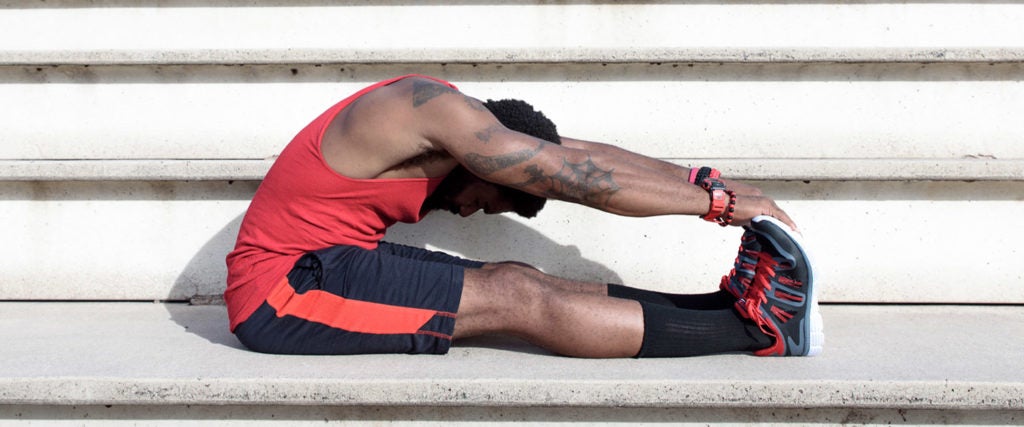Some days, I make the laziest bargain with myself: I don’t have to exercise, but I do at least have to sit on the floor and stretch. It helps me feel a little more in-tune with my body, and it’s definitely not comfortable. Stretching alone has gotta count for something, right? Please?
Apparently, it does actually count for something, but not exercise. According to Zvi Pearlstein, an orthopedic surgeon and founder of Missing Links Health, stretching may not qualify as traditional exercise on its own, but it’s still essential.
“We happen to be, as a nation, pretty ignorant about what the body needs,” he says. “The major exercise we need to stay alive is aerobic or cardiopulmonary vascular exercise to challenge the heart, lungs and blood vessel system. This is life preserving. If all you do is that, you’re okay. But the next requirement is the range of motion of your major muscles and joints from head to toe.”
“Is stretching and doing a full range of motion equivalent, health-wise, to doing 15 minutes or a half hour or aerobics?” Pearlstein asks, before confirming that it is most definitely not. “It’s a totally different program, it’s a different exercise for a different purpose. It’s to maintain and preserve your muscle and joint health.”
In other words, though stretching or performing what Pearlstein calls “full range of motion” exercises won’t help extend your life in the same way going for a run might, they’ll help you be far more comfortable in your body for the life you have. This is because our muscle and joint flexibility essentially have their own use-it-or-lose-it policy.
“When we’re young, we’re mostly water on a cellular level,” he says. “As we get older, we lose that water content. We’re stiff, we’re tight. When we’re old, we’re sedentary. What happens with that process of aging is that our muscles and ligaments are going to shorten, stiffen and tighten.”
This is part of the natural process of aging, but not stretching often enough can worsen these issues exponentially.
“If you don’t move on a daily basis through your full range of motion, what do you see? You see people when they’re 60, 70, 80 with their necks bent forward and they can’t straighten up, they’re walking with a walker, their hips get stuck, their shoulders get stuck. Why? Because they haven’t been moving for years,” he says. “One of the best things you can do for maintenance of your muscles and joints for prevention of problems and detection of them is doing full range of motion every day.”
Per Pearlstein’s recommendation, you really only need to take a minute each day to experience the benefits. In its most basic form, full range of motion exercises entail stretching your body parts to their semi-comfortable limit. For example, doing a full range of motion exercise on your neck involves folding your head forward, back and side to side, ensuring you’ve stretched all of the possible ways your neck can move.
In the long run, doing this regularly can help keep you from experiencing chronic pain or even needing surgery. By Pearlstein’s account, there have been thousands of spinal surgeries that could have been prevented by or even replaced with a proper stretching routine. As he further emphasizes, all aspects of health can be interconnected. “Your stress energy has to go somewhere. All your muscles and ligaments can potentially absorb the stresses of everyday life,” he says.
So, maybe stretching doesn’t “count” as exercise in the cardiovascular sense, but it’s still something good you can do for your body and mind. On days where I’m doing nothing other than hunching over my computer (or typing away completely reclined), taking a few minutes to ensure I can still move my limbs how they’re supposed to is way better than nothing. Perhaps I’ll die young from not working my heart enough, but I’ll die limber.

